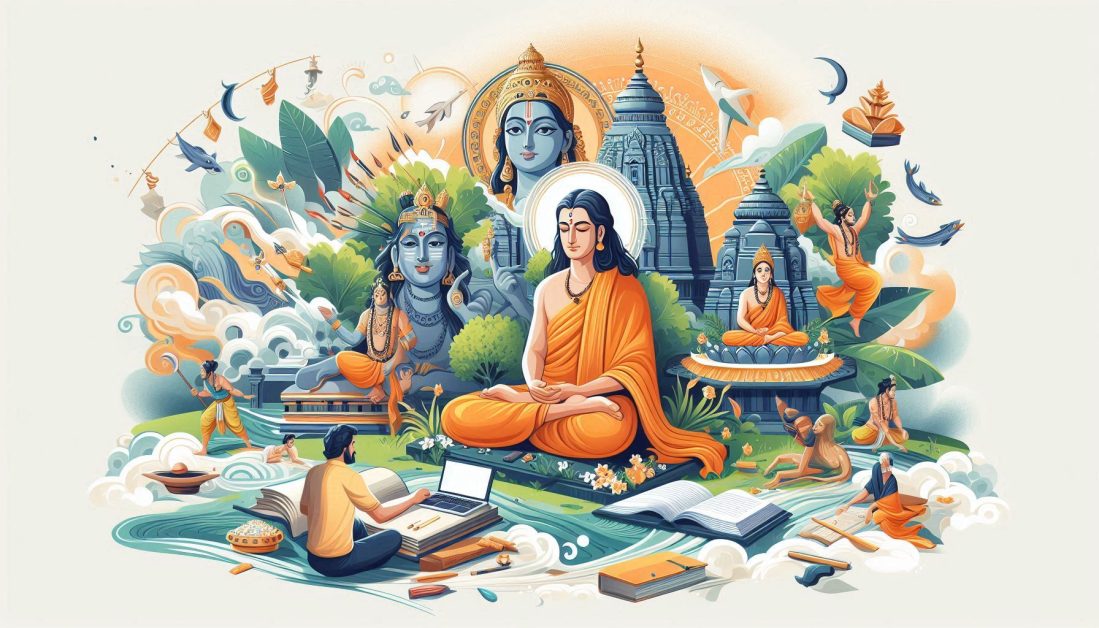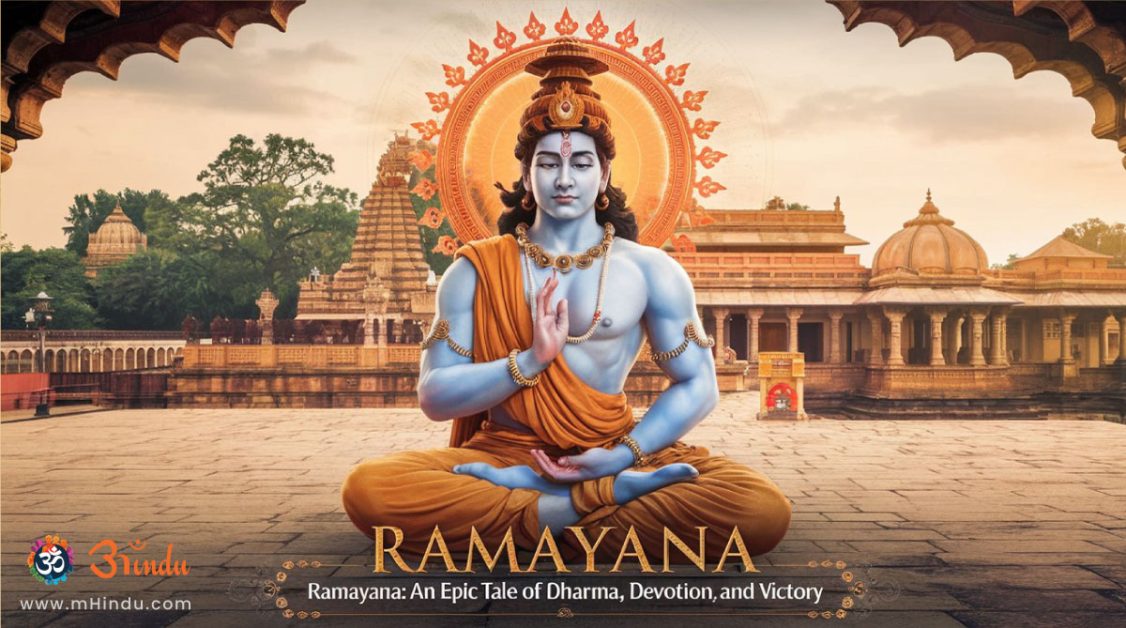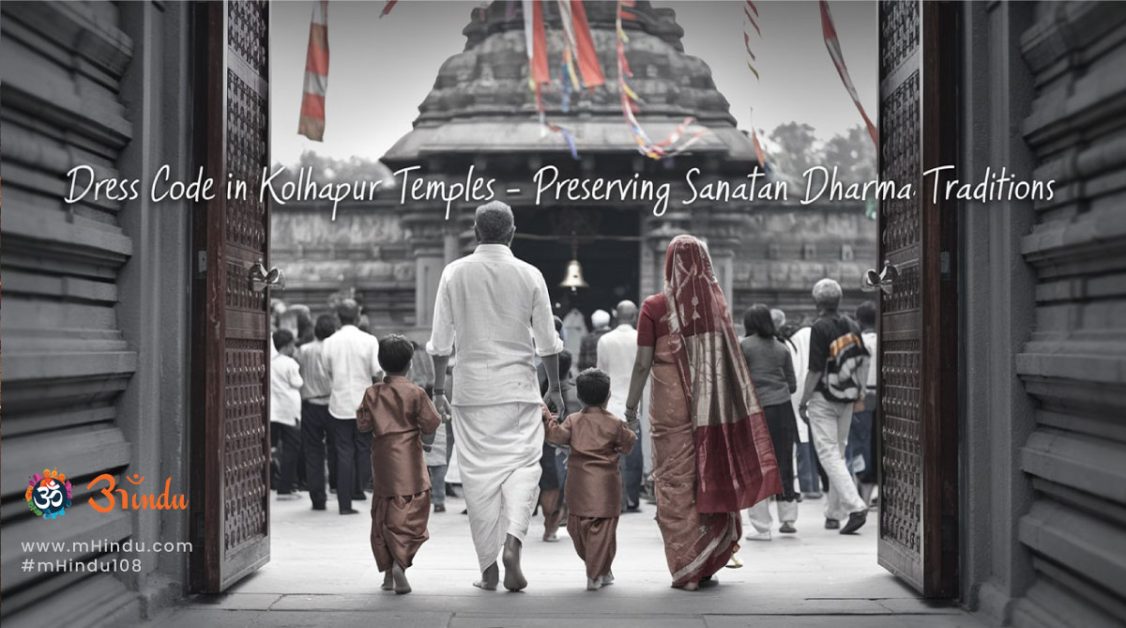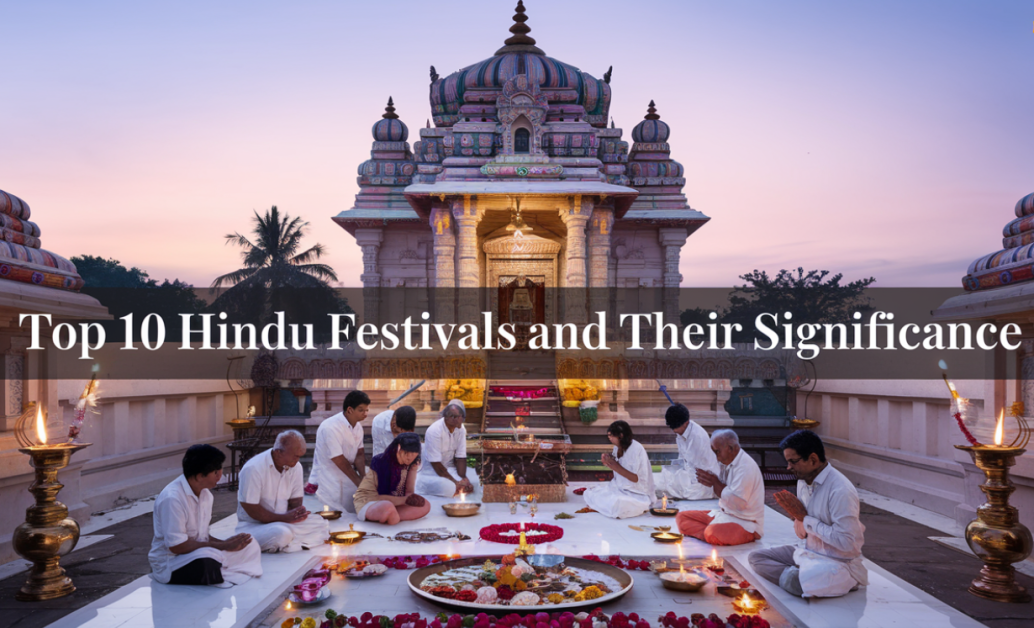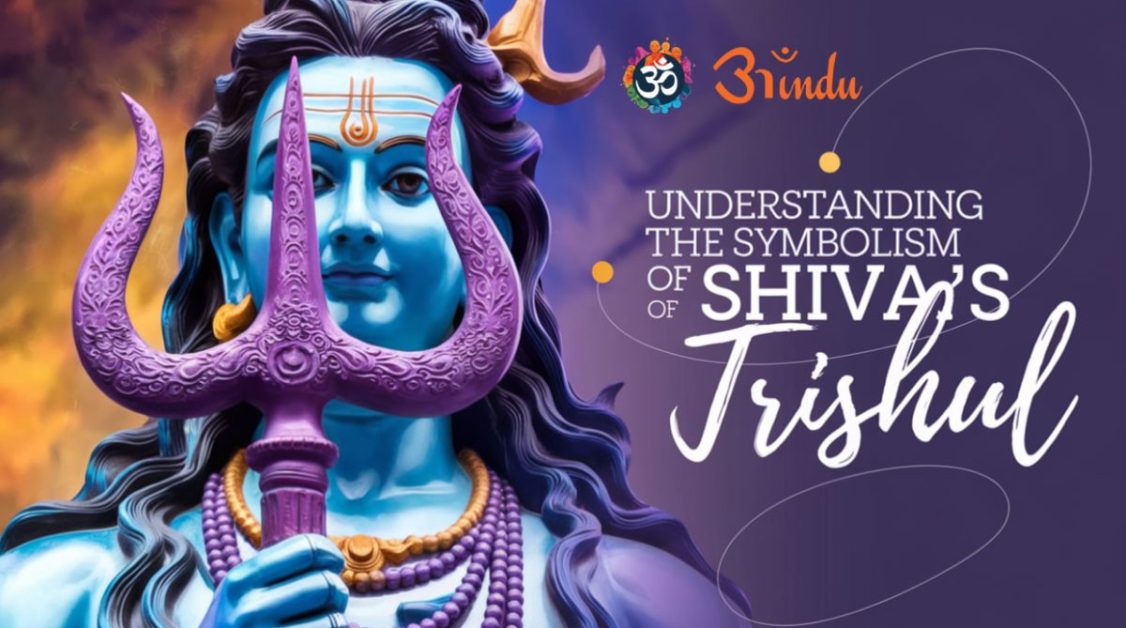
The Trishul, Lord Shiva’s iconic three-pronged trident, is more than just a weapon. It is a powerful symbol deeply embedded in Hindu mythology and philosophy, representing a profound cosmic order and the intricate interplay of creation, preservation, and destruction. Understanding the symbolism of Shiva’s Trishul goes beyond mere aesthetics; it delves into the core principles of Sanatan Dharma, offering insights into the cyclical nature of existence, the balance of forces, and the path to spiritual liberation.
Explore Blog Content
ToggleThe Trishul: A Weapon of Cosmic Significance
The Trishul, as a weapon, is a symbol of Shiva’s immense power and his role as the destroyer of evil. It signifies the annihilation of ignorance, ego, and negative forces that obstruct spiritual growth. However, the symbolism of the Trishul extends far beyond its destructive aspect.
Trishul Meaning
The term “Trishul” is derived from Sanskrit, where “tri” means three, and “shul” means a spear or a pointed weapon. Thus, Trishul literally translates to a three-pronged spear. This name itself hints at the triune nature of the symbolism it carries.
Decoding the Three Prongs: A Triune Representation
The three prongs of the Trishul represent three fundamental aspects of existence:
- Creation (Sristi): One prong symbolizes creation, representing the generative forces of the universe. It signifies the birth of all beings and the continuous cycle of life.
- Preservation (Sthiti): Another prong represents preservation, symbolizing the nurturing and sustaining forces that maintain the cosmos. It signifies the ongoing cycle of life and the importance of balance and harmony.
- Destruction (Samhara): The third prong represents destruction, symbolizing the cyclical nature of existence and the inevitable end of all things. It signifies the dissolution of old forms to make way for new beginnings.
“The mind is restless and difficult to control, but by practice and detachment it can be mastered.”Bhagavad Gita
Exploring the Layers of Meaning
Let’s delve into some of the key interpretations of the Shiva Trishul:
- The Three Gunas: In Hindu philosophy, the three prongs are often associated with the three gunas – Sattva (purity, goodness), Rajas (passion, activity), and Tamas (inertia, darkness). Shiva’s control over the Trishul signifies his mastery over these fundamental forces that govern all of creation. He is beyond these qualities, yet he wields them to maintain cosmic balance.
- The Three Worlds (Lokas): The Trishul also represents the three worlds or lokas – Bhuloka (earth), Bhuvarloka (intermediate space), and Svarloka (heaven). Shiva’s possession of the Trishul symbolizes his dominion over these realms. He is the ultimate ruler and protector of all existence.
- Time (Past, Present, Future): Another interpretation connects the three prongs to the three phases of time – past, present, and future. Shiva, as the embodiment of time (Mahakala), holds sway over all periods, signifying the eternal nature of reality.
- The Three Shaktis: Some traditions associate the Shiva Trishul with the three primary shaktis (energies) – Iccha Shakti (willpower), Kriya Shakti (power of action), and Jnana Shakti (power of knowledge). Shiva’s wielding of the Trishul shows his command over these fundamental energies.
- Creation, Preservation, and Destruction: The Trishul also signifies the cosmic functions of creation (Brahma), preservation (Vishnu), and destruction (Shiva). Shiva’s association with destruction is not about malevolent annihilation but about the necessary dissolution that precedes new creation, completing the cosmic cycle.
- The Control of the Mind: On a more personal level, the Trishul can represent the three main aspects of the human mind: manas (mind), buddhi (intellect), and ahamkara (ego). Shiva’s holding of the Trishul symbolizes the control needed to integrate and transcend these aspects for spiritual liberation.
- Duality and Non-Duality: The three prongs can also symbolize the inherent dualities of existence – good and evil, light and darkness, pleasure and pain. Shiva’s mastery over the Trishul implies his transcendence of these dualities, representing the ultimate non-dual reality.
Beyond the Physical: The Trishul as a Spiritual Symbol
The symbolism of the Trishul extends beyond the physical realm. It represents the three gunas (qualities) – sattva (goodness), rajas (passion), and tamas (inertia) – that influence all aspects of existence. The Trishul signifies the need to transcend these gunas and achieve a state of balance and equanimity.
- Sattva: The first prong can be associated with sattva, representing purity, peace, and harmony.
- Rajas: The second prong can be associated with rajas, representing passion, activity, and energy.
- Tamas: The third prong can be associated with tamas, representing inertia, darkness, and ignorance.
The Trishul in Art and Culture
The Trishul is a prominent symbol in Hindu art and culture. It is depicted in various forms, often adorning Shiva’s temples and statues. The Trishul is also a popular motif in Indian jewelry, clothing, and other forms of art.
"Truth is one, but the wise call it by many names."Rigveda
Connecting with the Symbolism
Understanding the symbolism of the Trishul can deepen our appreciation of Lord Shiva and his cosmic role. It encourages us to reflect on the deeper meanings of existence, the nature of time, the interplay of the gunas, and the importance of controlling our minds.
Conclusion
The symbolism of Shiva’s Trishul extends far beyond its physical form. It represents the profound cosmic order, the interplay of creation, preservation, and destruction, and the path to spiritual liberation. By understanding the deeper meaning of the Trishul, we can gain valuable insights into the nature of existence and our place within the universe. The Trishul serves as a powerful reminder of the cyclical nature of life, the importance of balance and harmony, and the need to transcend the limitations of our ego to achieve true spiritual freedom.
FAQs Section
- What does the Trishul represent in simple terms?
In simple terms, the Trishul represents power, destruction, and creation. It also symbolizes Shiva’s control over the three gunas (qualities of nature). - Why does Shiva hold the Trishul?
Shiva holds the Trishul to symbolize his power to destroy evil and ignorance, maintain cosmic balance, and signify his mastery over the forces of creation. - What are the three prongs of the Trishul said to represent?
The three prongs can represent the three gunas, the three worlds, the three phases of time, or the three shaktis, depending on the interpretation. - Is the Trishul only a symbol of destruction?
No, the Trishul is not just a symbol of destruction. It also represents creation and preservation, as destruction is necessary for new creation to occur. - How is the Trishul depicted in Shiva’s images?
The Trishul is often held in Shiva’s right hand, signifying his power. Sometimes, it is depicted with flames, emphasizing its destructive aspect. - What is the spiritual significance of understanding the Trishul’s symbolism?
Understanding the Trishul’s symbolism can deepen our connection with Shiva and provide insights into cosmic principles and the nature of reality. - Does the Trishul have any connection to the human mind?
Yes, the Trishul can also symbolize the three aspects of the human mind – mind, intellect, and ego – and the need to control them for spiritual growth. - Where can I learn more about the symbolism of Shiva Trishul?
You can learn more by studying Hindu scriptures, consulting with religious scholars, and researching reputable online resources about Hindu symbolism.

